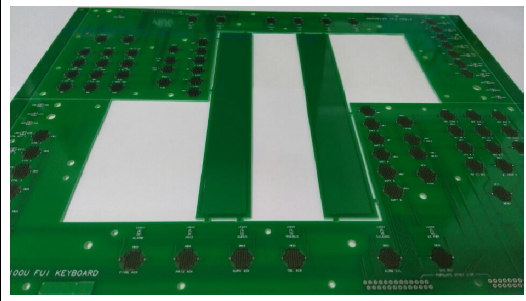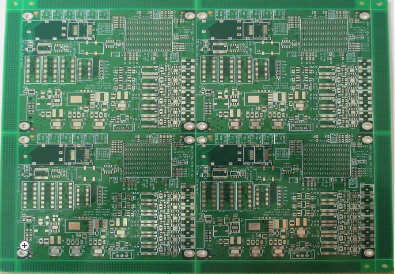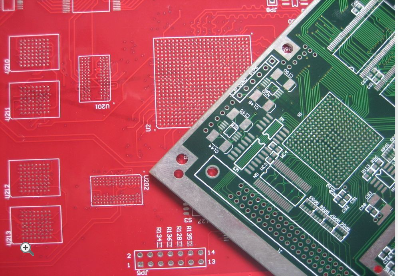-
 Agriculture
Agriculture
-
 Health-Care
Health-Care
-
 Environment
Environment
-
 Construction-Real-Estate
Construction-Real-Estate
-
 Tools-Hardware
Tools-Hardware
-
 Home-Garden
Home-Garden
-
 Furniture
Furniture
-
 Luggage-Bags-Cases
Luggage-Bags-Cases
-
 Medical-devices-Supplies
Medical-devices-Supplies
-
 Gifts-Crafts
Gifts-Crafts
-
 Sports-Entertainment
Sports-Entertainment
-
 Food-Beverage
Food-Beverage
-
 Vehicles-Transportation
Vehicles-Transportation
-
 Power-Transmission
Power-Transmission
-
 Material-Handling
Material-Handling
-
 Renewable-Energy
Renewable-Energy
-
 Safety
Safety
-
 Testing-Instrument-Equipment
Testing-Instrument-Equipment
-
 Construction-Building-Machinery
Construction-Building-Machinery
-
 Pet-Supplies
Pet-Supplies
-
 Personal-Care-Household-Cleaning
Personal-Care-Household-Cleaning
-
 Vehicle-Accessories-Electronics-Tools
Vehicle-Accessories-Electronics-Tools
-
 School-Office-Supplies
School-Office-Supplies
-
 Packaging-Printing
Packaging-Printing
-
 Mother-Kids-Toys
Mother-Kids-Toys
-
 Business-Services
Business-Services
-
 Commercial-Equipment-Machinery
Commercial-Equipment-Machinery
-
 Apparel-Accessories
Apparel-Accessories
-
 Security
Security
-
 Shoes-Accessories
Shoes-Accessories
-
 Vehicle-Parts-Accessories
Vehicle-Parts-Accessories
-
 Jewelry-Eyewear-Watches-Accessories
Jewelry-Eyewear-Watches-Accessories
-
 Lights-Lighting
Lights-Lighting
-
 Fabric-Textile-Raw-Material
Fabric-Textile-Raw-Material
-
 Fabrication-Services
Fabrication-Services
-
 Industrial-Machinery
Industrial-Machinery
-
 Consumer-Electronics
Consumer-Electronics
-
 Electrical-Equipment-Supplies
Electrical-Equipment-Supplies
-
 Electronic-Components-Accessories-Telecommunications
Electronic-Components-Accessories-Telecommunications
-
 Home-Appliances
Home-Appliances
-
 Beauty
Beauty
-
 Chemicals
Chemicals
-
 Rubber-Plastics
Rubber-Plastics
-
 Metals-Alloys
Metals-Alloys
- Masonry Materials
- Curtain Walls & Accessories
- Earthwork Products
- Fireproofing Materials
- Heat Insulation Materials
- Plastic Building Materials
- Building Boards
- Soundproofing Materials
- Timber
- Waterproofing Materials
- Balustrades & Handrails
- Bathroom & Kitchen
- Flooring & Accessories
- Tiles & Accessories
- Door, Window & Accessories
- Fireplaces & Stoves
- Floor Heating Systems & Parts
- Stairs & Stair Parts
- Ceilings
- Elevators & Escalators
- Stone
- Countertops, Vanity Tops & Table Tops
- Mosaics
- Metal Building Materials
- Multifunctional Materials
- Ladders & Scaffoldings
- Mouldings
- Corner Guards
- Decorative Films
- Formwork
- Building & Industrial Glass
- Other Construction & Real Estate
- Wallpapers/Wall panels
- HVAC System & Parts
- Outdoor Facilities
- Prefabricated Buildings
- Festive & Party Supplies
- Bathroom Products
- Household Sundries
- Rain Gear
- Garden Supplies
- Household Cleaning Tools & Accessories
- Lighters & Smoking Accessories
- Home Storage & Organization
- Household Scales
- Smart Home Improvement
- Home Textiles
- Kitchenware
- Drinkware & Accessories
- Dinnerware, Coffee & Wine
- Home Decor
- Golf
- Fitness & Body Building
- Amusement Park Facilities
- Billiards, Board Game,Coin Operated Games
- Musical Instruments
- Outdoor Affordable Luxury Sports
- Camping & Hiking
- Fishing
- Sports Safety&Rehabilitation
- Ball Sports Equipments
- Water Sports
- Winter Sports
- Luxury Travel Equipments
- Sports Shoes, Bags & Accessories
- Cycling
- Other Sports & Entertainment Products
- Artificial Grass&Sports Flooring&Sports Court Equipment
- Scooters
- Food Ingredients
- Honey & Honey Products
- Snacks
- Nuts & Kernels
- Seafood
- Plant & Animal Oil
- Beverages
- Fruit & Vegetable Products
- Frog & Escargot
- Bean Products
- Egg Products
- Dairy Products
- Seasonings & Condiments
- Canned Food
- Instant Food
- Baked Goods
- Other Food & Beverage
- Meat & Poultry
- Confectionery
- Grain Products
- Feminie Care
- Hair Care & Styling
- Body Care
- Hands & Feet Care
- Hygiene Products
- Men's Grooming
- Laundry Cleaning Supplies
- Travel Size & Gift Sets
- Room Deodorizers
- Other Personal Care Products
- Pest Control Products
- Special Household Cleaning
- Floor Cleaning
- Kitchen & Bathroom Cleaning
- Oral Care
- Bath Supplies
- Yellow Pages
- Correction Supplies
- Office Binding Supplies
- Office Cutting Supplies
- Board Erasers
- Office Adhesives & Tapes
- Education Supplies
- Pencil Cases & Bags
- Notebooks & Writing Pads
- File Folder Accessories
- Calendars
- Writing Accessories
- Commercial Office Supplies
- Pencil Sharpeners
- Pens
- Letter Pad/Paper
- Paper Envelopes
- Desk Organizers
- Pencils
- Markers & Highlighters
- Filing Products
- Art Supplies
- Easels
- Badge Holder & Accessories
- Office Paper
- Printer Supplies
- Book Covers
- Other Office & School Supplies
- Stationery Set
- Boards
- Clipboards
- Stamps
- Drafting Supplies
- Stencils
- Electronic Dictionary
- Books
- Map
- Magazines
- Calculators
- Baby & Toddler Toys
- Educational Toys
- Classic Toys
- Dress Up & Pretend Play
- Toy Vehicle
- Stuffed Animals & Plush Toys
- Outdoor Toys & Structures
- Balloons & Accessories
- Baby Food
- Children's Clothing
- Baby Supplies & Products
- Maternity Clothes
- Kids Shoes
- Baby Care
- Novelty & Gag Toys
- Dolls & Accessories
- Puzzle & Games
- Blocks & Model Building Toys
- Toddler Clothing
- Baby Clothing
- Kids' Luggage & Bags
- Arts, Crafts & DIY Toys
- Action & Toy Figures
- Baby Appliances
- Hobbies & Models
- Remote Control Toys
- Promotional Toys
- Pregnancy & Maternity
- Hygiene Products
- Kid's Textile&Bedding
- Novelty & Special Use
- Toy Weapons
- Baby Gifts
- Baby Storage & Organization
- Auto Drive Systems
- ATV/UTV Parts & Accessories
- Marine Parts & Accessories
- Other Auto Parts
- Trailer Parts & Accessories
- Auto Transmission Systems
- Train Parts & Accessories
- Universal Parts
- Railway Parts & Accessories
- Auto Brake Systems
- Aviation Parts & Accessories
- Truck Parts & Accessories
- Auto Suspension Systems
- Auto Lighting Systems
- New Energy Vehicle Parts & Accessories
- Auto Steering Systems
- Wheels, Tires & Accessories
- Bus Parts & Accessories
- Auto Performance Parts
- Cooling System
- Go-Kart & Kart Racer Parts & Accessories
- Air Conditioning Systems
- Heavy Duty Vehicle Parts & Accessories
- Auto Electrical Systems
- Auto Body Systems
- Auto Engine Systems
- Container Parts & Accessories
- Motorcycle Parts & Accessories
- Refrigeration & Heat Exchange Equipment
- Machine Tool Equipment
- Food & Beverage Machinery
- Agricultural Machinery & Equipment
- Apparel & Textile Machinery
- Chemical Machinery
- Packaging Machines
- Paper Production Machinery
- Plastic & Rubber Processing Machinery
- Industrial Robots
- Electronic Products Machinery
- Metal & Metallurgy Machinery
- Woodworking Machinery
- Home Product Manufacturing Machinery
- Machinery Accessories
- Environmental Machinery
- Machinery Service
- Electrical Equipment Manufacturing Machinery
- Industrial Compressors & Parts
- Tobacco & Cigarette Machinery
- Production Line
- Used Industrial Machinery
- Electronics Production Machinery
- Other Machinery & Industrial Equipment
- Camera, Photo & Accessories
- Portable Audio, Video & Accessories
- Television, Home Audio, Video & Accessories
- Video Games & Accessories
- Mobile Phone & Accessories
- Electronic Publications
- Earphone & Headphone & Accessories
- Speakers & Accessories
- Smart Electronics
- TV Receivers & Accessories
- Mobile Phone & Computer Repair Parts
- Chargers, Batteries & Power Supplies
- Used Electronics
- VR, AR, MR Hardware & Software
- Projectors & Presentation Equipments
- Other Consumer Electronics
- Cables & Commonly Used Accessories
- Computer Hardware & Software
- Displays, Signage and Optoelectronics
- Discrete Semiconductors
- Wireless & IoT Module and Products
- Telecommunications
- Connectors, Terminals & Accessories
- Development Boards, Electronic Modules and Kits
- Circuit Protection
- Sensors
- Isolators
- Audio Components and Products
- Integrated Circuits
- Power Supplies
- Relays
- RF, Microwave and RFID
- Electronic Accessories & Supplies
- Passive Components
- PCB & PCBA
- Air Quality Appliances
- Home Appliance Parts
- Heating & Cooling Appliances
- Small Kitchen Appliances
- Laundry Appliances
- Water Heaters
- Water Treatment Appliances
- Refrigerators & Freezers
- Personal Care & Beauty Appliances
- Major Kitchen Appliances
- Cleaning Appliances
- Second-hand Appliances
- Smart Home Appliances
- Other Home Appliances
- Energy Chemicals
- Inorganic Chemicals
- Basic Organic Chemicals
- Agrochemicals
- Admixture & Additives
- Catalysts & Chemical Auxiliary Agents
- Pigments & Dyestuff
- Coating & Paint
- Daily Chemicals
- Polymer
- Organic Intermediate
- Adhesives & Sealants
- Chemical Waste
- Biological Chemical Products
- Surface Treatment Chemicals
- Painting & Coating
- Chemical Reagents
- Flavor & Fragrance
- Non-Explosive Demolition Agents
- Other Chemicals
- Custom Chemical Services
Multilayer PCB Innovations Driving Efficiency In Modern Server Motherboards For Cloud Computing
As cloud computing continues to reshape the digital landscape, the demand for more powerful, efficient, and reliable data center infrastructure has never been greater. At the heart of this infrastructure lies the server motherboard, a complex piece of engineering that dictates the performance of entire server racks. While advancements in processors and memory often capture the spotlight, a quieter revolution has been occurring in the foundational technology that brings all these components together: the printed circuit board (PCB). Specifically, innovations in multilayer PCB design are proving to be a critical enabler of efficiency in modern server motherboards, directly addressing the challenges of high-speed data processing, thermal management, and power integrity required for cloud-scale operations. This article delves into the key multilayer PCB innovations that are driving this evolution, exploring how they contribute to the robust performance demanded by today's cloud computing environments.
Enhanced Signal Integrity and High-Speed Data Transmission
The relentless push for higher data transfer rates within servers, driven by technologies like PCIe 5.0 and beyond, places immense pressure on signal integrity. Traditional PCB designs struggle with issues such as crosstalk, attenuation, and electromagnetic interference (EMI) at these extreme frequencies. Multilayer PCBs provide the necessary architectural canvas to overcome these challenges. By dedicating specific internal layers to signal routing, designers can create controlled impedance pathways that are shielded from external noise. These signal layers are often sandwiched between ground and power planes, which act as reference planes and shielding, ensuring that high-speed signals travel cleanly from one component to another without degradation.
Furthermore, advanced materials with lower dielectric loss (Df) are now being incorporated into multilayer stack-ups. Materials like low-loss laminates (e.g., Megtron 6, Tachyon) are essential for maintaining signal strength over longer traces on a large server motherboard. The multilayer approach also allows for sophisticated via technologies, such as blind and buried vias, which enable more direct routing paths for critical signals, reducing stub lengths and reflections. This meticulous control over the signal path is not a luxury but a necessity for ensuring that data moves between CPUs, GPUs, memory, and network interfaces at the required speeds with minimal bit error rates, a fundamental requirement for cloud server uptime and performance.
Advanced Power Delivery Network (PDN) Design
Modern server processors and accelerators demand immense amounts of power with incredibly fast transient responses. A weak or unstable power delivery network (PDN) can lead to voltage droops, causing system crashes or reduced computational performance. Multilayer PCBs are instrumental in constructing a robust PDN. Designers can allocate entire layers to power planes, distributing different voltage levels (e.g., 12V, 5V, 3.3V, and sub-1V for cores) efficiently across the board. This dedicated plane-based distribution offers much lower impedance compared to traditional trace routing, ensuring that components receive clean, stable power even during sudden spikes in demand.
The multilayer structure also facilitates the strategic placement of decoupling capacitors. By placing small, high-frequency decoupling capacitors very close to the power pins of a processor on the surface layers, and connecting them directly to the adjacent power and ground planes through short vias, the PCB can effectively suppress high-frequency noise. The power planes themselves act as a large, distributed capacitor, smoothing out lower-frequency fluctuations. This hierarchical decoupling strategy, made possible by the layered architecture, is critical for maintaining power integrity, which directly translates to processor stability and efficiency—a key metric for cloud providers operating thousands of servers.
Superior Thermal Management Solutions
Thermal management is a paramount concern in densely packed server racks, as excessive heat directly impacts component lifespan and reliability. Multilayer PCBs contribute significantly to thermal dissipation. One of the most impactful innovations is the integration of thick copper planes within the PCB stack-up. While standard layers may use 1-ounce copper, power planes can be fabricated with 2-ounce or even 4-ounce copper, which not only carries higher current but also acts as a highly effective heat spreader, pulling heat away from hot components like voltage regulator modules (VRMs) and distributing it across a larger area of the board.
Another advanced thermal management technique enabled by multilayer technology is the embedding of thermal vias. These are arrays of vias filled with thermally conductive epoxy that are placed directly under high-power components, such as CPUs and GPUs. These vias create a low-thermal-resistance path from the component on the top side of the board to large copper planes on inner or bottom layers, effectively transferring heat into the board's core. In some cutting-edge designs, metal cores or insulated metal substrates (IMS) are incorporated into the multilayer build-up, providing an even more potent channel for heat to be conducted away from critical areas, thereby enhancing the overall cooling efficiency of the server system.
Increased Component Density and Miniaturization
The drive for greater computational density within a fixed server chassis footprint necessitates packing more functionality onto a single motherboard. Multilayer PCBs are the key to this miniaturization. With more layers available, routing congestion on the surface is dramatically reduced. Complex interconnections that would have required long, meandering traces on a double-sided board can be routed vertically through the board's layers using vias, resulting in a much more compact layout. This allows for the placement of components closer together and the integration of more features, such as additional memory channels, network controllers, and storage interfaces.
This increased density is further amplified by technologies like High-Density Interconnect (HDI). HDI PCBs use finer lines and spaces, smaller microvias, and sequential lamination processes to achieve a much higher wiring density per square inch. This is crucial for routing out the high-pin-count Ball Grid Array (BGA) packages used by modern server chips. By enabling a smaller motherboard form factor without sacrificing functionality, multilayer and HDI PCBs allow cloud data centers to maximize the number of servers per rack, directly improving computational density and reducing the physical footprint and associated overhead costs.
Improved Reliability and Manufacturing Precision
For cloud service providers, server reliability is non-negotiable, as downtime translates directly to financial loss and damaged reputation. Multilayer PCB manufacturing has evolved to meet this demand for extreme reliability. The lamination process, which fuses the individual layers together under heat and pressure, has become highly precise, ensuring strong bonds and eliminating delamination risks even under prolonged thermal cycling. Automated optical inspection (AOI) and electrical testing are performed throughout the manufacturing process to detect any defects, such as short circuits or open connections, in the complex internal layers.
The materials used in high-end server motherboards are also selected for their reliability characteristics. They possess a high Glass Transition Temperature (Tg) to withstand the elevated operating temperatures inside a server chassis without degrading. The coefficient of thermal expansion (CTE) is carefully matched between the PCB materials and the components (like silicon chips) to minimize mechanical stress on solder joints during power cycles. This focus on material science and precision manufacturing, inherent to advanced multilayer PCBs, results in server motherboards that can operate continuously for years with a very low failure rate, ensuring the unwavering service availability expected in cloud computing.
REPORT































































































































































































































































































































































































































































































































































































